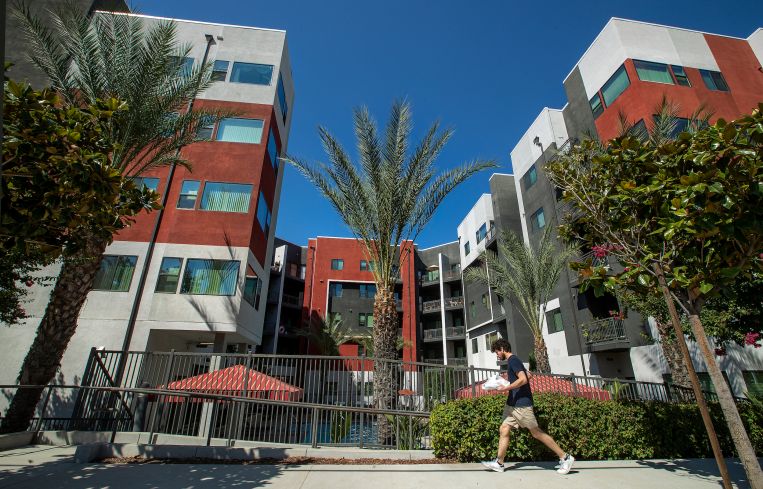Affordability Crisis: The Complex Challenge of Housing in the US
The growing delay in Americans’ transition to homeownership has pushed the average age of first-time homebuyers to 36 years
By Michael Lucarelli October 24, 2023 2:55 pm
reprints
The American dream of owning a home is becoming increasingly elusive for many.
In the United States, the cost of housing has reached staggering levels, posing a significant challenge for individuals and families striving to secure a place to call home. As of the second quarter of 2023, the median price for an existing single-family home stood at a daunting $416,100, as reported by the Federal Reserve Bank of St. Louis. In states like California, where demand is sky high, these prices skyrocket even further, with the average single-family home reaching a staggering $859,800 in August, according to data from the California Association of Realtors. In Los Angeles, the average home costs $882,000.
The burden of unaffordable housing doesn’t stop at the purchase price. Mortgage rates, which exceeded 8 percent for a 30-year fixed loan in mid-October, further compound the affordability crisis. These escalating costs in the for-sale housing market have created a domino effect on the rental market, leading to a multitude of interconnected issues.
A growing number of individuals, particularly millennials entering their prime child-rearing years, find themselves priced out of homeownership, consequently extending their stay in the rental market. This delay in transitioning to homeownership is reflected in the current average age of first-time homebuyers, which stands at a record 36 years.
This surge in rental demand has precipitated a severe imbalance between supply and demand. According to data from the National Association of Realtors, the United States currently faces a shortage of as many as 6.8 million rental units, a gap that widens with each passing year. This scarcity has led to significant spikes in rental prices, with median asking rents reaching near-record highs in August at $2,052 a month, representing a 0.7 percent increase from July and falling just $2 short of the all-time high set a year earlier, according to Redfin. In high-demand urban areas like Manhattan, median rents soared to a record-breaking $4,400 a month in July, as reported by Miller Samuel and Douglas Elliman.
The interconnectedness of the for-sale and rental segments has always been evident, with approximately 35 percent (and growing) of U.S. households being renter-occupied. Over the decades, various measures have been proposed and, in some cases, implemented to address housing affordability. Rent control, a century-old concept, has resurfaced in the public discourse, gaining momentum as a potential solution. The Biden Administration has advocated for a national-level rent control initiative, while cities such as New York are embroiled in debates as landlords push for the abolition of rent stabilization.
The reasons for and benefits of rent control include affordability, financial stability for tenants, more housing opportunities for low-income tenants, a sense of security without fear of catastrophic rent hikes, and community stability with a base of long-term residents. The drawbacks primarily are deferred maintenance by landlords, which leads to deteriorating housing stocks and reduced property values, and reduced housing supply as developers and investors hesitate to initiate new housing projects. Rent control undoubtedly benefits some tenants, particularly older and long-term residents with access to controlled rates. However, the overall impact of rent control is mixed. While it aims to make housing more affordable, it can unintentionally exacerbate housing issues.
As of 2022, seven states — California, New York, New Jersey, Maryland, Maine, Oregon and Minnesota — along with the District of Columbia have localities with some form of residential rent control in effect. While the intentions of rent control are laudable, artificial price controls can disrupt the natural balance of markets, causing imbalances between supply and demand. This, in turn, can deter developers from building new rental properties and limit options for prospective renters. Furthermore, rent control, originally aimed at benefiting low-income residents, can inadvertently benefit higher-income individuals, as evidenced by census data showing that 22 percent of tenants in rent-controlled units earn at least $100,000 annually.
The effectiveness of rent control is also in question, particularly in cities like San Francisco, Los Angeles, and New York, all of which have rent control policies in place but remain among the most expensive places to live in the country. Despite the implementation of rent control, these cities have witnessed decreasing affordability, exacerbated by chronic housing shortages.
In the face of the complex and multifaceted challenge of housing availability and affordability in the United States, addressing the issue requires comprehensive and carefully considered policies that balance the interests of both tenants and property owners. Rent control is top of mind. And while it may offer short-term relief to some, a more holistic approach that addresses supply, demand, and economic factors might be essential to ensure a sustainable and equitable housing market for everyone.
Michael Lucarelli is the CEO and co-founder of RentSpree.



